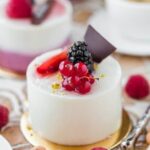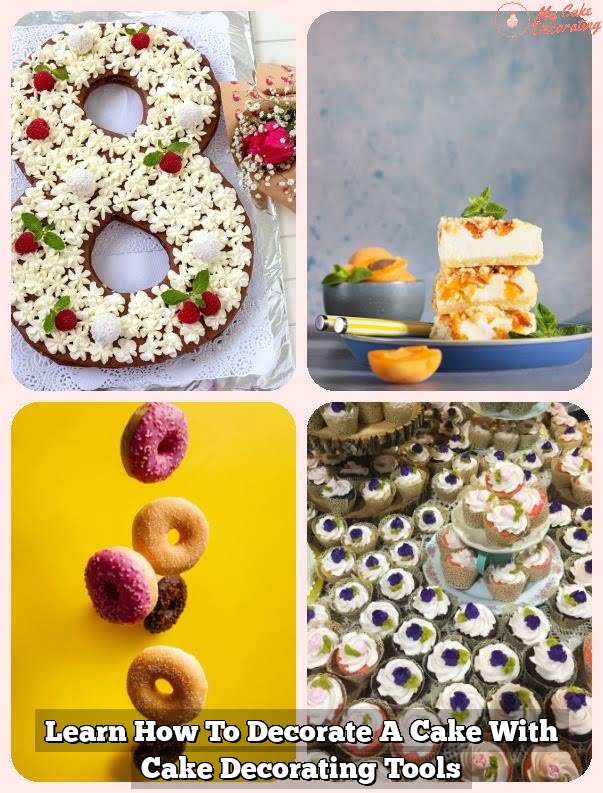Are you looking to add a beautiful and elegant touch to your cakes? Learn how to decorate a cake with swirls using the right frosting and techniques for a stunning result. From choosing the perfect frosting to troubleshooting common swirling issues, we’ve got you covered with everything you need to know about creating eye-catching swirl designs on your cakes.
When it comes to creating swirls on a cake, choosing the right frosting is key. Not all frostings are created equal, and some are better suited for achieving those perfect, smooth swirls that will make your cakes stand out. In this article, we’ll guide you through the process of selecting the ideal frosting for your swirling needs, as well as provide tips for coloring and preparing it for the best results.
Once you have chosen the right frosting, we’ll take you through every step of preparing your cake for swirling, including leveling and crumb coating. We’ll also explore the essential tools and techniques needed to create those flawless swirls, such as piping bags and tips. Whether you’re a beginner or an experienced baker looking to refine your skills, our comprehensive guide has something for everyone who wants to master the art of cake decorating with swirls.
Preparing Your Cake for Swirling
When it comes to decorating a cake with swirls, it’s important to start with a smooth and even surface. This means properly preparing your cake by leveling it and applying a crumb coat before adding the swirls. Here’s a step-by-step guide on how to prepare your cake for swirling:
1. Leveling Your Cake: Before you can start swirling frosting onto your cake, it’s essential to ensure that the top of the cake is level. This will provide a flat surface for your swirls and create an even presentation. You can use a long serrated knife or a cake leveler to carefully trim off any domed or uneven areas.
2. Applying a Crumb Coat: Once your cake is leveled, it’s time to apply a crumb coat. A crumb coat is a thin layer of frosting that seals in any loose crumbs, providing a smooth base for the final layer of frosting and swirls. Using an offset spatula, spread a thin layer of frosting over the entire cake, ensuring that all sides are covered.
3. Chilling Your Cake: After applying the crumb coat, place your cake in the refrigerator for at least 30 minutes to allow the frosting to set. This will make it easier to add the final layer of frosting and create beautiful swirl designs without disturbing the crumbs.
By following these steps for preparing your cake for swirling, you’ll be ready to move on to choosing the right frosting and techniques for creating perfect swirls on your beautifully prepped cake.
Tools and Techniques for Perfect Swirls
Piping bags and tips are essential tools for creating perfect swirls on a cake. The piping bag is used to hold the frosting, while the tip determines the shape and size of the swirl. When choosing a piping tip, it’s important to consider the design you want to create and the consistency of your frosting.
For basic swirl designs, a large round tip is ideal as it produces a simple and elegant swirl. If you want to create rosettes or more intricate designs, a star or petal tip would be more suitable. It’s also important to ensure that the tip is securely attached to the piping bag to avoid any frosting leakage while decorating your cake.
When it comes to filling the piping bag with frosting, it’s best to fill only two-thirds full to allow room for twisting and maintaining control over the bag. Twist the open end of the bag tightly to prevent any frosting from oozing out of the top while you decorate.
Proper technique is also crucial in achieving perfect swirls. Hold the piping bag at a 90-degree angle with constant pressure as you pipe in a circular motion from the outside edge of the cake towards the center, gradually building up height as you go. This will result in evenly shaped and textured swirls that will give your cake a professional finish.
| Tip Type | Ideal Design |
|---|---|
| Large Round Tip | Simple and Elegant Swirl |
| Star or Petal Tip | Rosettes or Intricate Designs |
Creating Different Swirl Designs
When it comes to decorating a cake with swirls, there are various designs to choose from. The classic swirl design involves creating a spiral pattern on the cake surface using a piping bag and tip. This timeless design is simple yet elegant, making it perfect for all types of occasions.
On the other hand, rosettes are another popular swirl design that adds a touch of sophistication to any cake. These intricate flower-like swirls are created by applying gentle pressure on the piping bag while moving in a circular motion.
For those looking for a lighter and more delicate option, whipped cream swirls are an excellent choice. This type of swirl design is created using whipped cream frosting, resulting in soft and airy swirls that are perfect for light and refreshing flavors such as lemon or strawberry. Each of these different swirl designs offers a unique decorative element to your cake and can be adapted to match the theme or style of the occasion.
To achieve the perfect classic, rosette, or whipped cream swirl design on your cake, it’s important to select the right piping tips. Large open star tips work well for classic swirls, while smaller closed star tips are ideal for creating intricate rosettes. As for whipped cream swirls, using a round tip will produce soft and fluffy dollops that will enhance the overall appearance of your cake.
| Swirl Design | Piping Tip |
|---|---|
| Classic Swirl | Large open star tip |
| Rosettes | Small closed star tip |
| Whipped Cream Swirls | Round tip |
Coloring Your Frosting for Vibrant Swirls
When it comes to decorating a cake with swirls, the color of your frosting can make a big impact on the overall look of the design. Here are some tips for achieving vibrant and eye-catching hues for your swirls:
1. Use gel food coloring: When adding color to your frosting, opt for gel food coloring instead of liquid food coloring. Gel colors are more concentrated, which means you’ll need less to achieve your desired hue, and they won’t water down your frosting.
2. Start with a small amount: You can always add more color to your frosting, but you can’t take it away. Start by adding a small amount of gel food coloring to your frosting and mix it in thoroughly before deciding if you need to add more.
3. Mix colors carefully: If you want to create custom shades or gradient effects for your swirls, mix different colored gels together separately before adding them to your frosting. This will help you achieve more precise and unique hues for your design.
By following these tips, you can ensure that the colors of your frosting swirls are vibrant and visually appealing, enhancing the overall look of your decorated cake.
Step-by-Step Guide to Decorating a Cake With Swirls
Once you have chosen the right frosting and prepared your cake for swirling, it’s time to start creating those beautiful swirls on your cake. Whether you are a beginner or an experienced baker, here is a step-by-step guide to help you decorate a cake with swirls, ranging from basic techniques to more advanced designs.
Basic Swirl Technique
Start by filling a piping bag fitted with a large round tip with your chosen frosting. Hold the bag at a 90-degree angle to the surface of the cake and apply even pressure as you pipe a spiral starting from the center of the cake and working your way outwards in concentric circles. Make sure to finish each swirl neatly so that they blend seamlessly into each other.
Creating Texture With Advanced Swirls
For more advanced swirl designs, consider using different piping tips for varied textures. A star-shaped tip can create beautiful rosettes or ruffles, while a petal tip can mimic flower petals for an elegant touch. Experiment with different tip shapes and sizes to add dimension and visual interest to your swirls.
Adding Layers and Combining Designs
To take your swirling skills to the next level, try layering different swirl designs on top of each other. For example, start with a base layer of classic swirls and then add smaller rosettes on top for a stunning layered effect. Don’t be afraid to mix and match different techniques to create a unique and eye-catching decoration on your cake.
By following this step-by-step guide, you can transform a simple frosted cake into a work of art with beautifully decorated swirls that are sure to impress any crowd. Whether you are just starting out or looking to enhance your existing skills, experimenting with various swirling techniques will elevate your cake decorating game and leave you feeling like a true pastry artist.
Troubleshooting Common Swirling Issues
Identifying Common Swirling Issues
When it comes to decorating a cake with swirls, there are a few common issues that may arise. Messy or uneven swirls can detract from the overall appearance of your cake, but with the right techniques, these problems can be easily fixed. Some of the most common swirling issues include inconsistent pressure when piping, frosting that is too warm or too cold, and using the wrong type of piping tip.
Fixing Uneven Swirls
If you find that your swirls are coming out uneven or lopsided, there are a few steps you can take to correct this issue. First, try to apply consistent pressure when piping the swirls onto the cake.
This will help ensure that the size and shape of each swirl is uniform. Additionally, make sure that your frosting is at the right temperature – if it’s too warm, it may be difficult to control the swirls, while frosting that is too cold can result in stiff and awkward piping.
Dealing With Messy Swirls
Messy swirls can be frustrating, but they’re not impossible to fix. If your swirls are coming out messy or jagged, try slowing down your piping speed and focusing on maintaining a smooth and steady motion as you create each swirl. It’s also important to use the right type of piping tip for the desired design – some tips may result in messy swirls if they are not suited for that particular technique.
By being mindful of these common issues and learning how to troubleshoot them effectively, you can ensure that your cake decorations turn out beautifully every time.
Advanced Swirling Techniques
Once you have mastered the basic swirl designs, it’s time to take your cake decorating skills to the next level by learning advanced swirling techniques like layering and combining different swirl designs. Layering involves adding multiple layers of swirls on top of each other to create a more intricate and visually appealing design. This technique is perfect for creating show-stopping cakes for special occasions or events.
To achieve a layered swirling effect, start by piping a base layer of swirls onto the cake using your desired frosting colors and piping tips. Once the base layer is complete, carefully add another layer of swirls on top, making sure to vary the size and shape of the swirls to create depth and dimension. Repeat this process as many times as needed to achieve the desired look, keeping in mind that precision and patience are key when layering swirls.
In addition to layering, combining different swirl designs can add an extra element of creativity to your cake decorating. This technique involves using various types of swirls, such as classic, rosettes, or whipped cream swirls, in conjunction with each other to create a unique and visually interesting pattern.
For example, you could alternate between piping classic swirls and rosettes around the perimeter of the cake, or mix whipped cream swirls with classic swirls for a modern twist. Experiment with different combinations to find what works best for your design preferences and aesthetic vision.
Decorating Cake Borders With Swirls
In conclusion, decorating cake borders with swirls can add a beautiful, finishing touch to your cake creations. Whether you’re a beginner or an experienced baker, mastering the art of swirling frosting can take your cakes to the next level. From classic swirl designs to more advanced techniques like layering and combining different swirl designs, there are endless possibilities when it comes to decorating with swirls.
When choosing the right frosting for your swirls, consider the consistency and color you want to achieve. Preparing your cake for swirling is also important – make sure to level and crumb coat your cake before adding the final decorative swirls. Using piping bags and tips is essential for achieving perfect swirls, so invest in quality tools and practice different techniques to find what works best for you.
Don’t be afraid to get creative with coloring your frosting for vibrant swirls. With some practice and patience, you’ll be able to achieve the perfect hues for your designs. And if you encounter any issues with messy or uneven swirls, we’ve provided troubleshooting tips to help you fix common swirling issues. Whether it’s a basic or advanced design, adding a swirl border to your cakes will surely impress your friends and family.
Frequently Asked Questions
How Do You Swirl Cake Topping?
To swirl cake topping, start by making sure the frosting or ganache is at the right consistency – not too runny but also not so stiff that it won’t swirl easily. Then, use a piping bag fitted with a large round tip and begin in the center of the cake.
Slowly pipe a spiral of frosting, working your way outwards towards the edge of the cake. Once you reach the edge, gently lift the piping bag to create a swirl effect, then stop squeezing and carefully pull away.
How Do You Swirl Icing on a Cake?
Swirling icing on a cake requires similar steps to swirling cake topping. Make sure your icing is at the right consistency and fill a piping bag fitted with a large round tip.
Start in the center of the cake and slowly pipe a spiral motion while working towards the outside edge. As you near the edge, carefully lift the piping bag to create a swirl effect, then stop squeezing and pull away.
What Tip for Swirls on Top of Cake?
For creating swirls on top of a cake, it’s best to use a large round tip for piping. This type of tip allows for smooth and even distribution of frosting or icing as you create decorative swirls on top of your cake.
The size of the tip can vary depending on how thick or thin you want your swirls to be, but generally, a larger round tip will work well for this purpose.

Welcome to my blog about home and family. This blog is a place where I will share my thoughts, ideas, and experiences related to these important topics. I am a stay-at-home mom with two young children. I hope you enjoy reading it! and may find some helpful tips and ideas that will make your home and family life even better!





